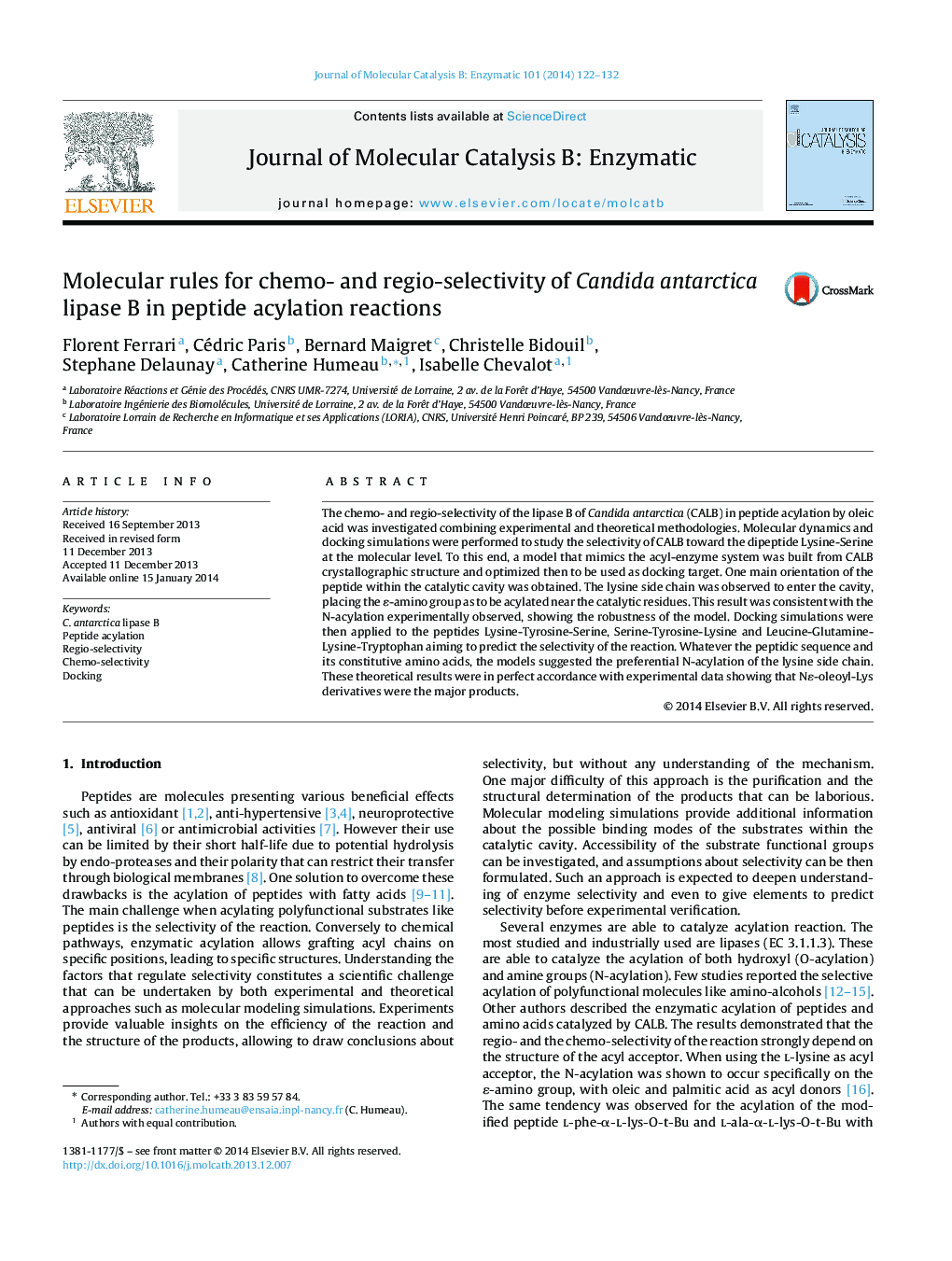| Article ID | Journal | Published Year | Pages | File Type |
|---|---|---|---|---|
| 69730 | Journal of Molecular Catalysis B: Enzymatic | 2014 | 11 Pages |
•Regio- and chemo-selectivity of CALB lipase toward peptide acylation was studied.•An acyl-enzyme model was built and used as target to dock Lys-based peptides.•Models predicted the N-ɛ acylation of the lysine whatever the peptidic sequence.•Selectivity predictions were in accordance with experimental data.•The cavity shape was shown to be the main factor guiding the selectivity.
The chemo- and regio-selectivity of the lipase B of Candida antarctica (CALB) in peptide acylation by oleic acid was investigated combining experimental and theoretical methodologies. Molecular dynamics and docking simulations were performed to study the selectivity of CALB toward the dipeptide Lysine-Serine at the molecular level. To this end, a model that mimics the acyl-enzyme system was built from CALB crystallographic structure and optimized then to be used as docking target. One main orientation of the peptide within the catalytic cavity was obtained. The lysine side chain was observed to enter the cavity, placing the ɛ-amino group as to be acylated near the catalytic residues. This result was consistent with the N-acylation experimentally observed, showing the robustness of the model. Docking simulations were then applied to the peptides Lysine-Tyrosine-Serine, Serine-Tyrosine-Lysine and Leucine-Glutamine-Lysine-Tryptophan aiming to predict the selectivity of the reaction. Whatever the peptidic sequence and its constitutive amino acids, the models suggested the preferential N-acylation of the lysine side chain. These theoretical results were in perfect accordance with experimental data showing that Nɛ-oleoyl-Lys derivatives were the major products.
Graphical abstractFigure optionsDownload full-size imageDownload as PowerPoint slide
